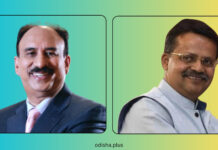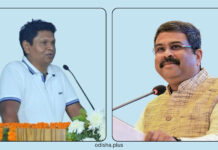OdishaPlus Bureau
On the 5th and 6th day evening of the weeklong celebration of classical dance and music on the occasion of the 25th OMC Guru Kelucharan Mohapatra Award Festival enthralled the Bhubaneswar audience with the classical fare of dance and music. Before getting into the penultimate evening, a stellar Sarod recital by Debasmita Bhattacharya on the fifth day, followed by engaging Odissi dance presentations by Nupur Dance Academy and Art Vision, Bhubaneswar captured the attention of the viewers.
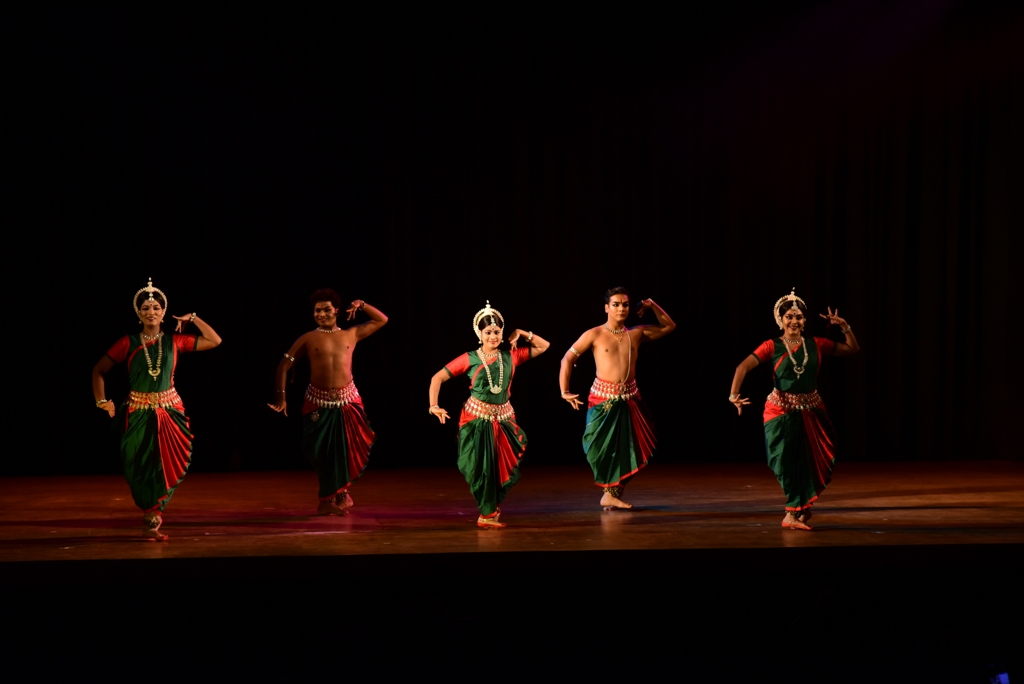
The first presentation of the evening was a Sarod recital by Debasmita Bhattacharya, ably accompanied by Sandip Ghosh on Tabla. They presented an evening of Raag Durga. A seasonal raag based on Sharad Ritu, Debasmita Bhattacharya’s recital created a mellifluous ambiance which perfectly portrayed this raag. Then Debasmita moved on to recite Bandish in a mood of celebrating the incoming of Durga Puja, Jaya Durge Ma.
The music session was followed by two group presentations by Nupur Dance Academy, under the mentorship of Niranjan Rout and Dr. Ileana Citaristi’s group Art Vision. After presenting the Khamaj Pallavi, a pure dance presentation Nupur Dance Academy progressed to presentations of Abhinay on Shiva Stotram, celebrating the cosmic dance of Lord Shiva, and the Tandava, praising the lord and seeking salvation from him through the power of dance.
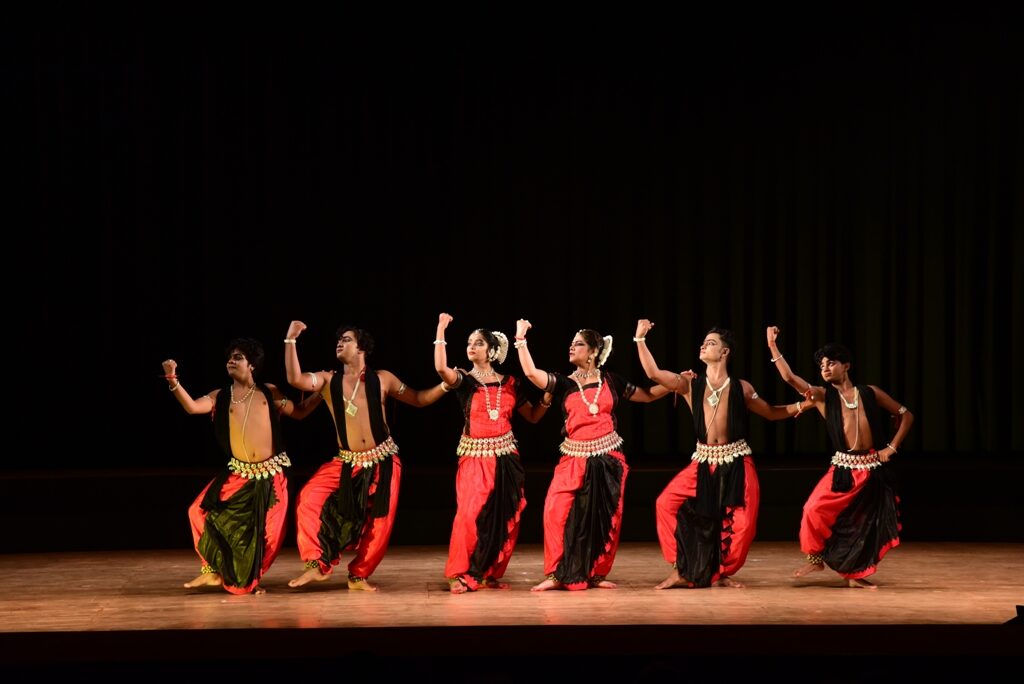
Under the able guidance of Dr. Ileana Citaristi, her group Art Vision presented the dance recital of Akshara – A Dalliance with the Odia Alphabet. This was a poetic composition which captures dancing with the Odia alphabet in a mood of gaiety, both as dalliance and also as homage to this rich and ancient language. Beginning with the rituals of commencement of writing in any Odia village by drawing three circles on the dry mud with lime sticks, these initial shapes and shadows of roundness were shown to denote the genesis of the Odia alphabet. Being choreographed by Dr. Ileana Citaristi, Akshara was scripted and conceptualized by Devdas Chhotray, and set to the melodious musical composition of Lakshmikant Palit, and features special sand animation by Sudarshan Pattnaik.
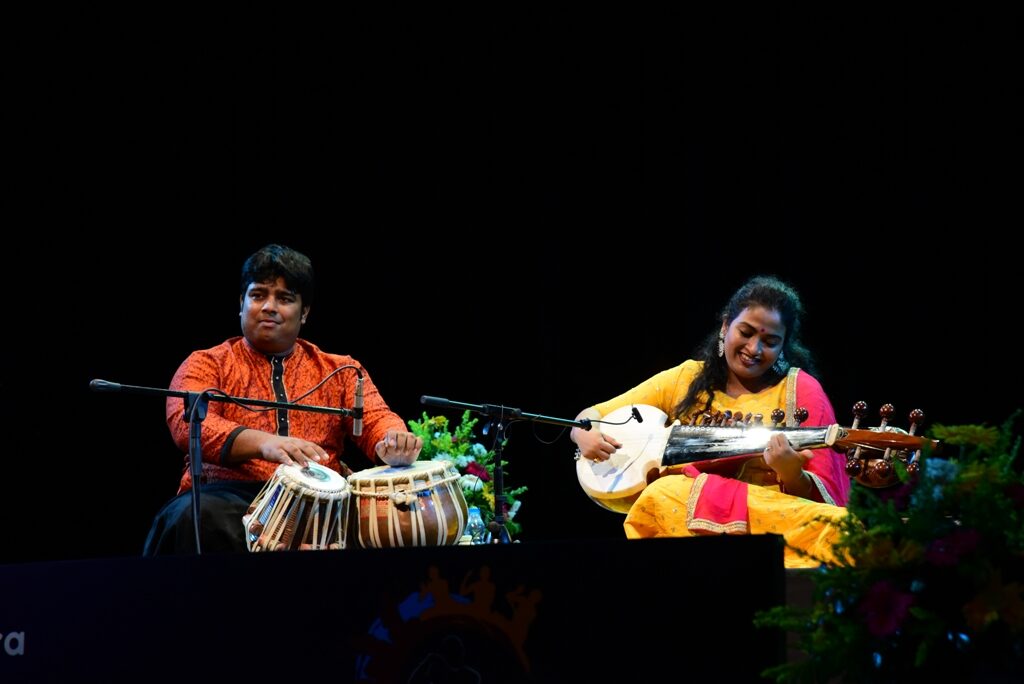
On the sixth evening, in the initial section, Odissi Music vocalist Bijay Kumar Jena presented his recital accompanied by eminent musicians of Odisha, Satchidananda Das on the Mardala, Srinibas Satpathy on the Flute, Balakrushna Jena on the Harmonium, Sitakanta Jena on the Manjira, etc. Highlighting the nuances and various facets unique to Odissi music, Bijay Kumar Jena began his recital with a Prabandh in Raag Behag and Jati Taal, “Prana dhana prana rakha dharuchi to painki” composed by eminent Odia poet Banamali. This was followed by the recitals of “Barada Bidhure Ana” composed by poet Benudhar Prabandh in Raag Marwa and Ektaali, and a Janana, “He Narayana” written by Abhirama Paramahansa set to Raag Vajrakanti. His concluding piece was a composition by Kavi Samrat Upendra Bhanja in Raag Bhairavi and Ektaali.
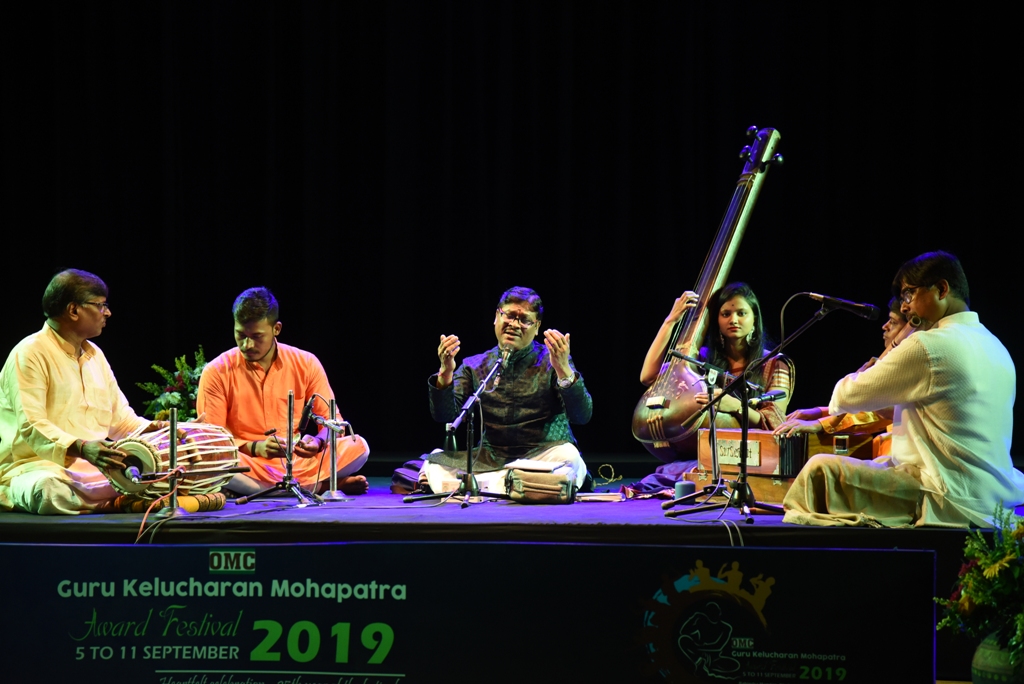
Following this, Nrutyashala, led by Ashok Kumar Ghos presented the production Mun, the Immortal Devil. Based on the theme of pride, ego, and vanity of man, the presentation depicted well known mythological stories from three yugas before moving on to the present. In the Satya Yuga, Hiranyaksha was killed by Narasimha, in the Treta Yuga, Ravana was defeated by Sri Rama, in the Dwapara Yuga, Kamsa was crushed by Krishna and in the Kali Yuga, Mun, existing as a manifestation of the three aforementioned evils was shown to be trounced only by Om. Thus, the presentation portrayed that in today’s world, each individual has a sense of ego and self-grandeur, and only the Almighty, Om can destroy it. Whereas the script was by Nabakishore Mishra, the dance recital was choreographed by Ashok Kumar Ghosal and set to the music composition of Himanshu Sekhar Swain, with the rhythm accompaniment of Dhaneswar Swain and Ajay Kumar.
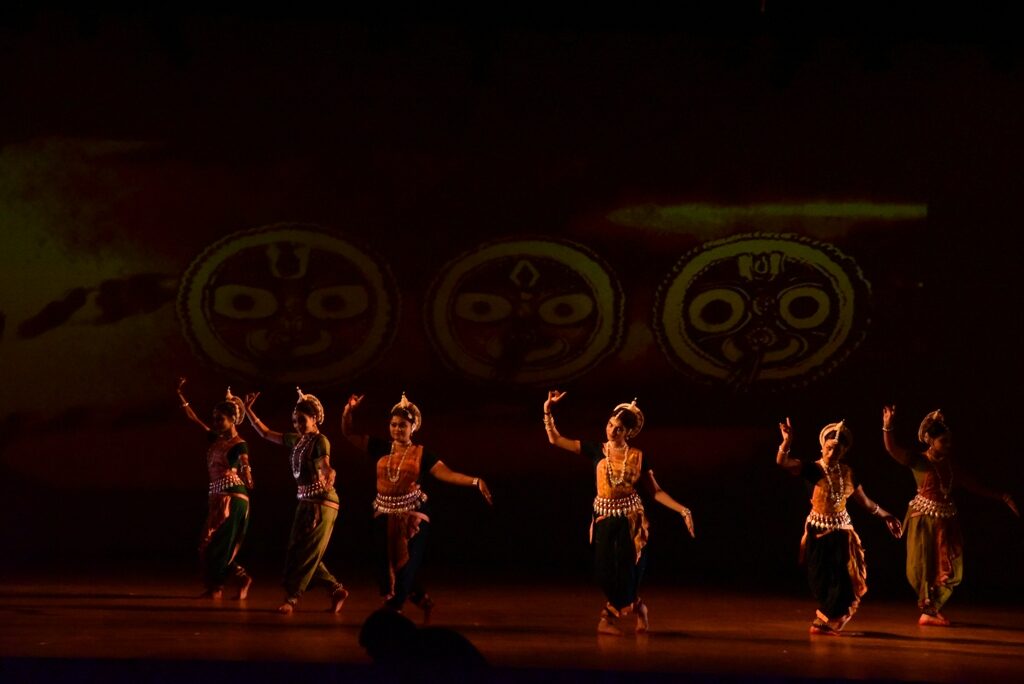
The concluding presentation on a penultimate evening was Jagannath Gopinath by Durga Charan Ranbir’s Nrutyayan ensemble. In this dance recital, a parallel has been drawn between the earlier form of Lord Krishna in Dwapara Yuga, and the rituals of Lord Jagannath at Puri. This composition has its literary base in multiple ancient texts including the Skanda Purana, Bhagavata by Atibadi Jagannath Das, and the poetry of Shri Goura Charan Adhikara and Shri Banamali Das. Set to Raga Malika and Talamalika, the script for this presentation was written by Kedar Mishra, rhythm composition is by Dhaneswar Swain and the dance choreography is by Durga Charan Ranbir.
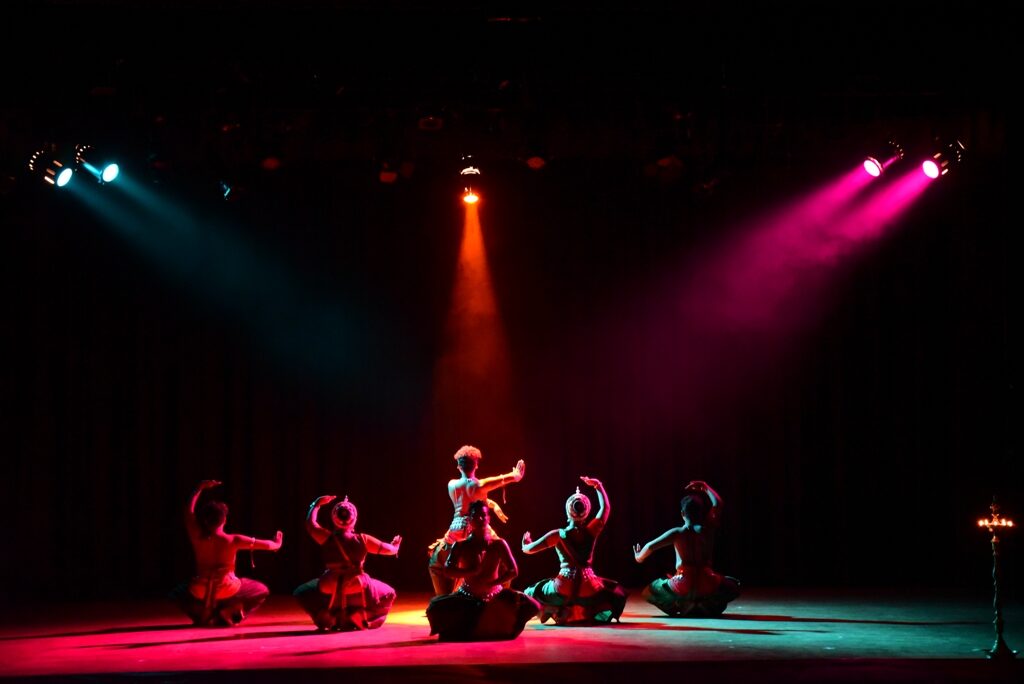
Tomorrow, on the closing day of the festival, after handing over the awards to the recipients Srjn, the organizing body of the function is going to present their own recital. It’s worth mentioning here that Srjn’s attempt to commemorate the 25th year celebration of the GKCM Award Festival, this time around a seven-day festival in place of the annual five-day event is being organized. This in fact is the largest fare of classical dance in Odisha that has made itself equal to the festival of a pan national level.




